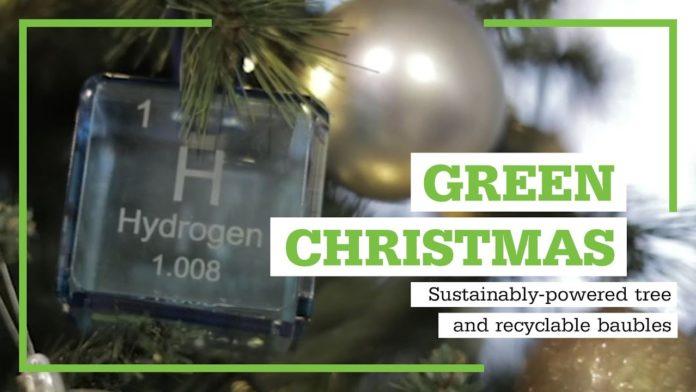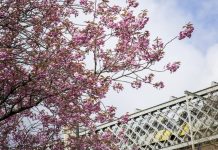The Faculty of Science and Engineering at Manchester’s Metropolitan University has unveiled a Christmas tree powered by sustainable hydrogen and featuring baubles that represent chemical elements from the periodic table.
Amer Gaffar, Director of the University’s Manchester Fuel Cell Innovation Centre, said: “Over the Christmas period, it’s very easy to generate waste and excess. One of the prime examples of this is the energy we are using to power lights for our homes, Christmas decorations and trees.
“In fact, Christmas lights are estimated to cost the UK an incredible £3.75 million per day, and the average household will add £50 to their energy bills in December.
“That said, it is understandable at this time of year to want to be festive and partake in some of these cheerful traditions. But, what we want to show people is that it is possible to celebrate during the Christmas season, whilst still being sustainable and mindful of waste.
Festive fuel cell technology
“That is why this year we decided to light up the Christmas tree in the Faculty of Science and Engineering using hydrogen fuel cells.”
The Christmas tree, located inside Manchester Metropolitan’s John Dalton building, runs off fuel cells, which are a clean and efficient source of energy. They convert hydrogen into electricity, with the only by-products being electricity, heat and clean water.
Amer added: “By using hydrogen to power our Christmas lights, we are able to stay off grid and reduce our carbon footprint, without compromising our Christmas cheer.”
Science was not just utilised to power the tree, but was also the theme for this year’s festive decorations, too.
Technology from PrintCity, the University’s very own additive manufacturing centre, and the Department of Engineering, was used to create the specially designed, fit-for-purpose baubles.
Each bauble represents either a symbol of a chemical element or the molecule of an element, and have been made to last and be used for many years to come.
Mark Chester, Innovation Development Manager at PrintCity, said: “The Christmas baubles represent when and when not to use additive manufacturing.
“Due to the complexity of the molecules, 3D printing was the most suitable option, and using a 3D printer also means we are able to produce less waste material then other forms of manufacturing.
“However, the element cubes were more suited to traditional methods of manufacturing, with the chemical symbols being etched in using laser technology from within the engineering department.
“It is always important to consider multiple manufacturing processes when making anything so the best methods are chosen to create a quality and lasting product – and to avoid single-use waste.”
The Christmas tree is being showcased in the John Dalton building reception area between now and Christmas.







